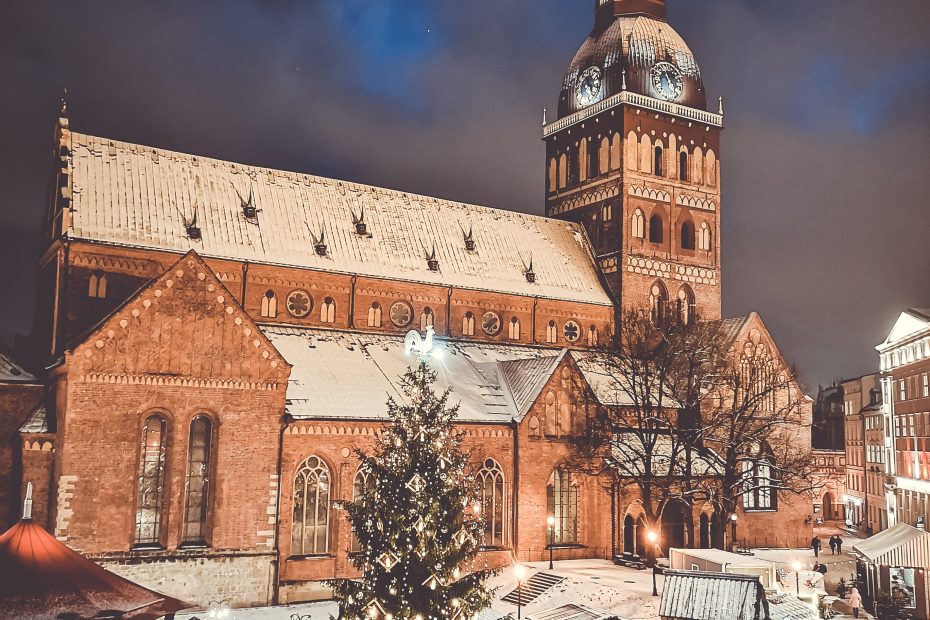Table of Contents
Introduction
With its endless tracts of forest, miles of sandy beaches, and abundance of lakes and wetlands, Latvia is a nature lover’s paradise. Much of the country’s diverse and spectacular landscapes are protected within several national parks that showcase everything from windswept sea cliffs to primeval woodlands. Latvia’s national parks offer visitors the chance to experience pristine natural settings and partake in activities like hiking, cycling, and wildlife viewing. For those seeking unspoiled vistas and outdoor adventures, Latvia’s national parks are an open invitation to explore the country’s natural splendor.
Gauja National Park
Spanning over 900 km2, Gauja National Park is Latvia’s largest national park and contains a tremendous diversity of landscapes. Located northeast of Riga, the park contains rivers, hills, forests, meadows, and over 500 cultural and historical monuments. One of the park’s most iconic features is its towering sandstone outcrops that create unique rock formations perfect for climbing. With hundreds of kilometres of hiking trails that range from easy walks to challenging treks, Gauja National Park offers fantastic hiking opportunities. The Gauja River allows visitors to experience the park from the water through kayaking and canoeing. For cyclists, the park contains a vast network of paths and gravel roads that wind through the forests and along the riverbanks.
Ķemeri National Park
Occupying a long stretch of coastline along the Baltic Sea, Ķemeri National Park showcases a landscape contrast between forest, mires, and wetlands. Located about an hour from Riga, the park protects fragile wetland ecosystems and is an important stopover for migratory birds. Over 200 bird species use the park as nesting grounds or migration stopovers, including grey herons, western marsh harriers, and black storks. The boardwalk trail at Lake Kaņieris makes wildlife viewing easy, while the Sloka Lake trail passes unique sphagnum bogs. With its diversity of ecosystems, frequent sightings of beavers, deer, and even wolves are possible in Ķemeri.
Slītere National Park
At the northernmost tip of Latvia along the Baltic Sea sits the wild, windswept landscape of Slītere National Park. This rugged stretch of seacoast contains striking sea cliffs, pine forests, bushy juniper stands, and dune ecosystems. The park’s varied flora includes many rare species like bladderworts, orchids, and insectivorous plants that have adapted to thrive in the coastal habitats. Slītere’s remote location creates ample opportunities for outdoorsy adventures like sea kayaking, stand up paddleboarding, and beachcombing for amber along the desolate coastline. With few crowds and access to both forested inland areas and the dynamic Baltic seaboard, Slītere is ideal for escaping into nature.
Rāzna National Park
In eastern Latvia, Rāzna National Park protects primeval valleys carved by ancient glaciers and presents incredible scenic diversity. Encompassing the rolling Rāzna hills, visitors are treated to vistas over deep ravines, lush forests, glassy lakes, and wetlands. Containing many natural landmarks and myths, Rāzna has long been an important cultural site for Latvians. The park provides excellent opportunities for spotting wildlife like beavers, otters, deer, wild boar, and even endangered brown bears that inhabit the remote forests. An extensive trail system allows hikers and nature photographers to fully experience Rāzna’s beauty and solitude.
Gaiziņkalns Nature Reserve
Just an hour’s drive southeast from Riga, the Gaiziņkalns Nature Reserve protects Latvia’s highest cliff and is characterized by dramatic rock landscapes. Looming 64 meters over Lake Mazais Baltezers, the Gaiziņkalns cliff is an impressive wall of Devonian sandstone boulders. Hiking trails ranging from an easy 30 minutes to a more strenuous three hours allow visitors to explore the area’s unique geology and forests. At the top, panoramic views over the surrounding lake district open up. The pink Rhododendron blooms in June provide an extra pop of color on the cliffs. Gaiziņkalns makes for an excellent quick nature escape from Riga.
Cīrulīši Nature Park
On the edge of Riga, Cīrulīši Nature Park provides an easily accessible recreation spot for locals and visitors. Sitting on the picturesque Lake Jugla, Cīrulīši contains woodland walking trails, meadows, farms, and lakes perfect for short walks and picnicking. Families especially enjoy interacting with the domestic animals like goats, horses, sheep, and chickens that live on the park’s educational farms. Cīrulīši presents a nice taste of Latvian nature to combine with a trip to the capital city.
Conclusion
With habitats spanning from the Baltic seacoast to forested inland hills, Latvia’s national parks highlight the country’s diverse and stunning natural assets. Adventurers can climb sea cliffs, while wildlife watchers may spot bears, birds, and rare plants. Above all, Latvia’s national parks allow visitors to connect with the country’s pristine landscapes and experience untouched natural beauty through hiking, cycling, and water activities. For travelers seeking unspoiled vistas, fresh air, and outdoor adventures, the national parks provide the perfect opportunity to explore Latvia’s magnificent wild places.
FAQs
How many national parks does Latvia have?
Latvia has four major national parks: Gauja National Park, Ķemeri National Park, Slītere National Park, and Rāzna National Park. There are also several nature reserves and protected areas.
What is the largest national park in Latvia?
Gauja National Park is the largest national park, spanning over 900 km2 in the country’s northeast.
What animals can you see in Latvia’s national parks?
Brown bears, beavers, deer, wild boar, wolves, and over 200 species of birds including storks and herons inhabit Latvia’s national parks.
What activities can you do in Latvia’s national parks?
Hiking, cycling, kayaking, stand up paddleboarding, climbing, wildlife viewing, photography, and beachcombing are all popular activities.
What time of year is best to visit Latvia’s national parks?
May through September offers the warmest weather. May and June have the longest days and blooming flowers, while September is ideal for wildlife watching like bird migration.
